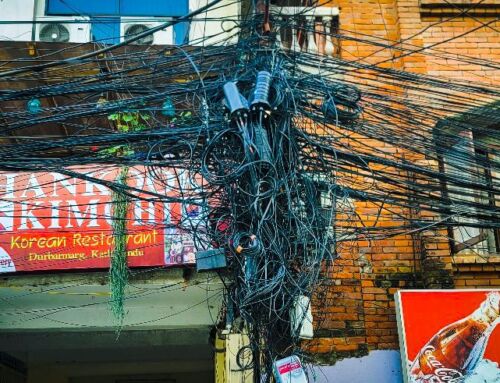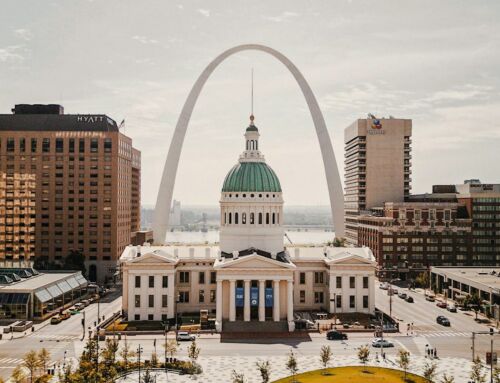View by Topic
Recent Articles
-
Federal Government Finalizes New Efficiency Standards for LightbulbsSaturday, April 13th, 2024
-
2024 IECC is Final After Addressing Preemption IssuesSaturday, April 6th, 2024
-
Settlement Portends Broad Failure in Attempts to Ban Natural GasSaturday, March 30th, 2024
-
SEC Climate Disclosure Rule Stay and Venue Now in the 8th CircuitSaturday, March 23rd, 2024
-
EV Charger Data ApocalypseSaturday, March 16th, 2024
View by Month/Year
“Green Building Law Update” Headlines
Recent Articles & News from
Stuart Kaplow’s blog
at GreenBuildingLawUpdate.com
- Shedding Light on the Future: The Evolution of Lightbulbs in the Wake of New Energy Efficiency Standards April 14, 2024
- 2024 International Energy Conservation Code is Final After Addressing Preemption April 7, 2024
- Settlement Portends Broad Failure in Attempts to Ban Natural Gas March 31, 2024
- SEC Climate Disclosure Rule Stay and Venue Now in the 8th Circuit March 24, 2024
Subscribe to the Green Building Law Update!
Stuart Kaplow brings his expertise and extensive experience to the table with his unique digital publication, "Green Building Law Update". Subscribers receive regular updates to keep them informed about important issues surrounding Environmental Law, Green Building & Real Estate Law, as well as the emerging demand for Environmental Social Governance (ESG).
Get fresh content through the lense of Stuart Kaplow's cutting-edge expertise, innovative commentary and insider perspective. Don't miss another issue! Subscribe below.

Is California Going to Ban Cows in the Name of Climate Change?
The California Environmental Protection Agency Air Resources Board has issued a “Proposed Short-Lived Climate Pollutant Reduction Strategy” that includes the penultimate statement,
California’s dairy and livestock industries account for roughly half of the State’s total methane emissions and about five percent of the State’s overall GHG emissions. About half of the emissions from the State’s 5.5 million total beef and dairy cows come from enteric fermentation (mostly belching), and the other half from manure management practices, primarily lagoon storage of flushed manure from milking cows.
So, with targets on the backs of cows, “for dairies, California will aim to reduce methane emissions .. by at least 20 percent in 2020, 50 percent in 2025, and 75 percent in 2030.”
One of the many problems with that aim is California dairy cows already “produce low enteric fermentation emissions per gallon of milk“ .. (they belch less) when compared to other U.S. cows. So, the goal of further reducing methane emissions, such that “a gallon of California milk might be the least GHG intensive in the world” also means that it will be among the most expensive milk in the world.
The Proposal acknowledges the additional costs and advocates unproven strategies like new “gut microbial interventions” that lab test show have the potential to reduce enteric fermentation emissions 30% without affecting milk production, but those genetically modified organisms don’t sound like organic milk.
There are other bad alternatives. Argentina’s INTA governmental research body has developed cow backpacks that trap the Methane they belch in order to turn it into renewable energy.
The New York Times ran a story, on December 14, 2008, entitled, “Eat Kangaroos To Fight Global Warming” .. admittedly of all the ideas articulated to combat climate change, George Wilson of the Australian Wildlife Services may have the least intuitive – eat more kangaroos! Kangaroos don’t produce Methane. But there is a problem. Despite that some consider kangaroo a specialty meat, the reaction has not been positive to Skippy on the menu.
Or possibly California could leave the cows alone and concentrate on more realistic matters, like why it took 112 days to plug the leak from the Aliso Canyon storage facility that spewed more than 97,000 metric tons of Methane into the Los Angeles air in what was arguable the single largest source of pollution in the State last year.
The Federal government is not targeting cows in its new rules released in May to cut Methane emissions from the oil and gas industry.
So why pick on dairy cows? This is not even a save the planet by eating less meat initiative. The root of this Proposal was an October 16, 2014 rulemaking petition filed with the Air Resources Board by the nonprofit Animal Legal Defense Fund seeking to have the State regulate greenhouse gas emissions from animal agriculture. From that Petition spewed this Proposal.
This fall, Board staff will present the final strategy, which many expect will cut in half Methane emissions from dairy operations. Nearly a third of California’s 1,400 dairies, have less than 500 milking cows and it is not clear how they will survive the new regulatory strategy; but then that is the overarching goal.
It may not be long before consumers will be smuggling organic milk into California from Nevada and Arizona.









